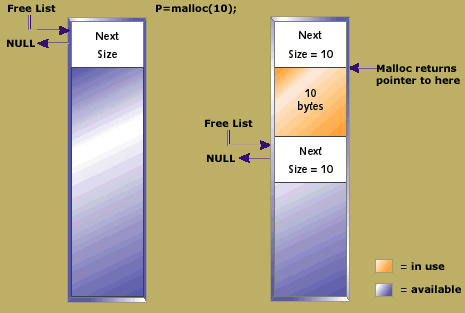malloc is C's dynamic memory allocation function: memory is assigned to the process heap and then the malloc dynamic assignation does its magic, to make boundaries between dynamically assigned variables. Here's how it works (bear in mind that a malloc implementation is largely compiler-dependent):
At the beginning of the process' heap free space, a special region is allocated to point to the next available byte address in the free region and a previous pointer to the pointers corresponding to the previously allocated block. In case there is no block allocated next, the pointer is null. Otherwise, the pointer will point as many bytes ahead in the process memory as the corresponding allocated block's size.
The function free updates the following block's previous pointer after the recently liberated block, which causes mismatch with the preceding block's next pointer pointing to the deleted block. This creates an accounted free block. To speed up, free can have its own list of free block and sizes elsewhere on the heap.

No comments:
Post a Comment